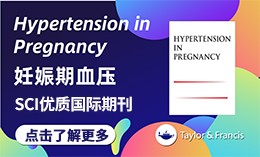-
Storage Codes on Coset Graphs with Asymptotically Unit Rate Combinatorica (IF 1.0) Pub Date : 2024-07-23 Alexander Barg, Moshe Schwartz, Lev Yohananov
A storage code on a graph G is a set of assignments of symbols to the vertices such that every vertex can recover its value by looking at its neighbors. We consider the question of constructing large-size storage codes on triangle-free graphs constructed as coset graphs of binary linear codes. Previously it was shown that there are infinite families of binary storage codes on coset graphs with rate
-
A Whitney Type Theorem for Surfaces: Characterising Graphs with Locally Planar Embeddings Combinatorica (IF 1.0) Pub Date : 2024-07-23 Johannes Carmesin
-
Reconstruction in One Dimension from Unlabeled Euclidean Lengths Combinatorica (IF 1.0) Pub Date : 2024-07-11 Robert Connelly, Steven J. Gortler, Louis Theran
-
On Pisier Type Theorems Combinatorica (IF 1.0) Pub Date : 2024-07-11 Jaroslav Nešetřil, Vojtěch Rödl, Marcelo Sales
-
Unavoidable Flats in Matroids Representable over Prime Fields Combinatorica (IF 1.0) Pub Date : 2024-07-11 Jim Geelen, Matthew E. Kroeker
We show that, for any prime p and integer \(k \ge 2\), a simple \({{\,\textrm{GF}\,}}(p)\)-representable matroid with sufficiently high rank has a rank-k flat which is either independent in M, or is a projective or affine geometry. As a corollary we obtain a Ramsey-type theorem for \({{\,\textrm{GF}\,}}(p)\)-representable matroids. For any prime p and integer \(k\ge 2\), if we 2-colour the elements
-
On Directed and Undirected Diameters of Vertex-Transitive Graphs Combinatorica (IF 1.0) Pub Date : 2024-07-09 Saveliy V. Skresanov
-
Bounding the Diameter and Eigenvalues of Amply Regular Graphs via Lin–Lu–Yau Curvature Combinatorica (IF 1.0) Pub Date : 2024-07-09 Xueping Huang, Shiping Liu, Qing Xia
-
Links and the Diaconis–Graham Inequality Combinatorica (IF 1.0) Pub Date : 2024-06-27 Christopher Cornwell, Nathan McNew
-
Neighborhood Complexity of Planar Graphs Combinatorica (IF 1.0) Pub Date : 2024-06-24 Gwenaël Joret, Clément Rambaud
-
List-Avoiding Orientations Combinatorica (IF 1.0) Pub Date : 2024-06-11 Peter Bradshaw, Yaobin Chen, Hao Ma, Bojan Mohar, Hehui Wu
Given a graph G with a set F(v) of forbidden values at each \(v \in V(G)\), an F-avoiding orientation of G is an orientation in which \(\deg ^+(v) \not \in F(v)\) for each vertex v. Akbari, Dalirrooyfard, Ehsani, Ozeki, and Sherkati conjectured that if \(|F(v)| < \frac{1}{2} \deg (v)\) for each \(v \in V(G)\), then G has an F-avoiding orientation, and they showed that this statement is true when \(\frac{1}{2}\)
-
Arc Connectivity and Submodular Flows in Digraphs Combinatorica (IF 1.0) Pub Date : 2024-05-28 Ahmad Abdi, Gérard Cornuéjols, Giacomo Zambelli
-
Criticality in Sperner’s Lemma Combinatorica (IF 1.0) Pub Date : 2024-05-14 Tomáš Kaiser, Matěj Stehlík, Riste Škrekovski
-
List-k-Coloring H-Free Graphs for All $$k>4$$ Combinatorica (IF 1.0) Pub Date : 2024-05-14 Maria Chudnovsky, Sepehr Hajebi, Sophie Spirkl
-
A Proof of a Frankl–Kupavskii Conjecture on Intersecting Families Combinatorica (IF 1.0) Pub Date : 2024-05-14 Agnijo Banerjee
A family \(\mathcal {F} \subset \mathcal {P}(n)\) is r-wise k-intersecting if \(|A_1 \cap \dots \cap A_r| \ge k\) for any \(A_1, \dots , A_r \in \mathcal {F}\). It is easily seen that if \(\mathcal {F}\) is r-wise k-intersecting for \(r \ge 2\), \(k \ge 1\) then \(|\mathcal {F}| \le 2^{n-1}\). The problem of determining the maximum size of a family \(\mathcal {F}\) that is both \(r_1\)-wise \(k_1\)-intersecting
-
On the Zarankiewicz Problem for Graphs with Bounded VC-Dimension Combinatorica (IF 1.0) Pub Date : 2024-05-14 Oliver Janzer, Cosmin Pohoata
The problem of Zarankiewicz asks for the maximum number of edges in a bipartite graph on n vertices which does not contain the complete bipartite graph \(K_{k,k}\) as a subgraph. A classical theorem due to Kővári, Sós, and Turán says that this number of edges is \(O\left( n^{2 - 1/k}\right) \). An important variant of this problem is the analogous question in bipartite graphs with VC-dimension at most
-
Effective Bounds for Induced Size-Ramsey Numbers of Cycles Combinatorica (IF 1.0) Pub Date : 2024-05-14 Domagoj Bradač, Nemanja Draganić, Benny Sudakov
-
Rainbow Cycles in Properly Edge-Colored Graphs Combinatorica (IF 1.0) Pub Date : 2024-05-02 Jaehoon Kim, Joonkyung Lee, Hong Liu, Tuan Tran
We prove that every properly edge-colored n-vertex graph with average degree at least \(32(\log 5n)^2\) contains a rainbow cycle, improving upon the \((\log n)^{2+o(1)}\) bound due to Tomon. We also prove that every properly edge-colored n-vertex graph with at least \(10^5 k^3 n^{1+1/k}\) edges contains a rainbow 2k-cycle, which improves the previous bound \(2^{ck^2}n^{1+1/k}\) obtained by Janzer.
-
Rainbow Variations on a Theme by Mantel: Extremal Problems for Gallai Colouring Templates Combinatorica (IF 1.0) Pub Date : 2024-04-29 Victor Falgas-Ravry, Klas Markström, Eero Räty
-
Note on the Theorem of Balog, Szemerédi, and Gowers Combinatorica (IF 1.0) Pub Date : 2024-04-23 Christian Reiher, Tomasz Schoen
We prove that every additive set A with energy \(E(A)\ge |A|^3/K\) has a subset \(A'\subseteq A\) of size \(|A'|\ge (1-\varepsilon )K^{-1/2}|A|\) such that \(|A'-A'|\le O_\varepsilon (K^{4}|A'|)\). This is, essentially, the largest structured set one can get in the Balog–Szemerédi–Gowers theorem.
-
A Lower Bound for Essential Covers of the Cube Combinatorica (IF 1.0) Pub Date : 2024-04-23 Gal Yehuda, Amir Yehudayoff
-
Turán Density of Long Tight Cycle Minus One Hyperedge Combinatorica (IF 1.0) Pub Date : 2024-04-17 József Balogh, Haoran Luo
-
Bounding the Chromatic Number of Dense Digraphs by Arc Neighborhoods Combinatorica (IF 1.0) Pub Date : 2024-04-17 Felix Klingelhoefer, Alantha Newman
The chromatic number of a directed graph is the minimum number of induced acyclic subdigraphs that cover its vertex set, and accordingly, the chromatic number of a tournament is the minimum number of transitive subtournaments that cover its vertex set. The neighborhood of an arc uv in a tournament T is the set of vertices that form a directed triangle with arc uv. We show that if the neighborhood of
-
Solution to a Problem of Grünbaum on the Edge Density of 4-Critical Planar Graphs Combinatorica (IF 1.0) Pub Date : 2024-04-17 Zdeněk Dvořák, Carl Feghali
-
Small Subgraphs with Large Average Degree Combinatorica (IF 1.0) Pub Date : 2024-04-15 Oliver Janzer, Benny Sudakov, István Tomon
-
A Hypergraph Analog of Dirac’s Theorem for Long Cycles in 2-Connected Graphs Combinatorica (IF 1.0) Pub Date : 2024-04-15 Alexandr Kostochka, Ruth Luo, Grace McCourt
-
Globally Linked Pairs of Vertices in Generic Frameworks Combinatorica (IF 1.0) Pub Date : 2024-04-08 Tibor Jordán, Soma Villányi
-
Induced Subgraphs and Tree Decompositions VIII: Excluding a Forest in (Theta, Prism)-Free Graphs Combinatorica (IF 1.0) Pub Date : 2024-04-08 Tara Abrishami, Bogdan Alecu, Maria Chudnovsky, Sepehr Hajebi, Sophie Spirkl
-
Bounded-Diameter Tree-Decompositions Combinatorica (IF 1.0) Pub Date : 2024-04-08 Eli Berger, Paul Seymour
When does a graph admit a tree-decomposition in which every bag has small diameter? For finite graphs, this is a property of interest in algorithmic graph theory, where it is called having bounded “tree-length”. We will show that this is equivalent to being “boundedly quasi-isometric to a tree”, which for infinite graphs is a much-studied property from metric geometry. One object of this paper is to
-
The Number of Topological Types of Trees Combinatorica (IF 1.0) Pub Date : 2024-04-04 Thilo Krill, Max Pitz
-
Lattice Path Matroids and Quotients Combinatorica (IF 1.0) Pub Date : 2024-04-04 Carolina Benedetti-Velásquez, Kolja Knauer
-
Flashes and Rainbows in Tournaments Combinatorica (IF 1.0) Pub Date : 2024-04-04 António Girão, Freddie Illingworth, Lukas Michel, Michael Savery, Alex Scott
Colour the edges of the complete graph with vertex set \({\{1, 2, \dotsc , n\}}\) with an arbitrary number of colours. What is the smallest integer f(l, k) such that if \(n > f(l,k)\) then there must exist a monotone monochromatic path of length l or a monotone rainbow path of length k? Lefmann, Rödl, and Thomas conjectured in 1992 that \(f(l, k) = l^{k - 1}\) and proved this for \(l \ge (3 k)^{2 k}\)
-
Upper Tail Behavior of the Number of Triangles in Random Graphs with Constant Average Degree Combinatorica (IF 1.0) Pub Date : 2024-04-04 Shirshendu Ganguly, Ella Hiesmayr, Kyeongsik Nam
-
Isoperimetric Inequalities and Supercritical Percolation on High-Dimensional Graphs Combinatorica (IF 1.0) Pub Date : 2024-04-04 Sahar Diskin, Joshua Erde, Mihyun Kang, Michael Krivelevich
-
Boolean Function Analysis on High-Dimensional Expanders Combinatorica (IF 1.0) Pub Date : 2024-03-18 Yotam Dikstein, Irit Dinur, Yuval Filmus, Prahladh Harsha
We initiate the study of Boolean function analysis on high-dimensional expanders. We give a random-walk based definition of high-dimensional expansion, which coincides with the earlier definition in terms of two-sided link expanders. Using this definition, we describe an analog of the Fourier expansion and the Fourier levels of the Boolean hypercube for simplicial complexes. Our analog is a decomposition
-
Ramsey Problems for Monotone Paths in Graphs and Hypergraphs Combinatorica (IF 1.0) Pub Date : 2024-02-28 Lior Gishboliner, Zhihan Jin, Benny Sudakov
-
The Ungar Games Combinatorica (IF 1.0) Pub Date : 2024-02-21 Colin Defant, Noah Kravitz, Nathan Williams
-
-
An Upper Bound for the Height of a Tree with a Given Eigenvalue Combinatorica (IF 1.0) Pub Date : 2024-02-02 Artūras Dubickas
In this paper we prove that every totally real algebraic integer \(\lambda \) of degree \(d \ge 2\) occurs as an eigenvalue of some tree of height at most \(d(d+1)/2+3\). In order to prove this, for a given algebraic number \(\alpha \ne 0\), we investigate an additive semigroup that contains zero and is closed under the map \(x \mapsto \alpha /(1-x)\) for \(x \ne 1\). The problem of finding the smallest
-
On the Generating Rank and Embedding Rank of the Hexagonic Lie Incidence Geometries Combinatorica (IF 1.0) Pub Date : 2024-01-05 A. De Schepper, J. Schillewaert, H. Van Maldeghem
Given a (thick) irreducible spherical building \(\Omega \), we establish a bound on the difference between the generating rank and the embedding rank of its long root geometry and the dimension of the corresponding Weyl module, by showing that this difference does not grow when taking certain residues of \(\Omega \) (in particular the residue of a vertex corresponding to a point of the long root geometry
-
Euler’s Theorem for Regular CW-Complexes Combinatorica (IF 1.0) Pub Date : 2024-01-05 Richard H. Hammack, Paul C. Kainen
-
A Topological Version of Hedetniemi’s Conjecture for Equivariant Spaces Combinatorica (IF 1.0) Pub Date : 2023-12-19 Vuong Bui, Hamid Reza Daneshpajouh
-
Tight Bound on Treedepth in Terms of Pathwidth and Longest Path Combinatorica (IF 1.0) Pub Date : 2023-12-19 Meike Hatzel, Gwenaël Joret, Piotr Micek, Marcin Pilipczuk, Torsten Ueckerdt, Bartosz Walczak
-
Edge-Connectivity and Pairwise Disjoint Perfect Matchings in Regular Graphs Combinatorica (IF 1.0) Pub Date : 2023-12-19 Yulai Ma, Davide Mattiolo, Eckhard Steffen, Isaak H. Wolf
-
A Characterization of Graphs Whose Small Powers of Their Edge Ideals Have a Linear Free Resolution Combinatorica (IF 1.0) Pub Date : 2023-11-27 Nguyen Cong Minh, Thanh Vu
Let I(G) be the edge ideal of a simple graph G. We prove that \(I(G)^2\) has a linear free resolution if and only if G is gap-free and \({{\,\textrm{reg}\,}}I(G) \le 3\). Similarly, we show that \(I(G)^3\) has a linear free resolution if and only if G is gap-free and \({{\,\textrm{reg}\,}}I(G) \le 4\). We deduce these characterizations by establishing a general formula for the regularity of powers
-
A Group Ring Approach to Fuglede’s Conjecture in Cyclic Groups Combinatorica (IF 1.0) Pub Date : 2023-11-27 Tao Zhang
Fuglede’s conjecture states that a subset \(\Omega \subseteq \mathbb {R}^{n}\) with positive and finite Lebesgue measure is a spectral set if and only if it tiles \(\mathbb {R}^{n}\) by translation. However, this conjecture does not hold in both directions for \(\mathbb {R}^n\), \(n\ge 3\). While the conjecture remains unsolved in \(\mathbb {R}\) and \(\mathbb {R}^2\), cyclic groups are instrumental
-
Tiling Edge-Coloured Graphs with Few Monochromatic Bounded-Degree Graphs Combinatorica (IF 1.0) Pub Date : 2023-11-21 Jan Corsten, Walner Mendonça
-
Universal Planar Graphs for the Topological Minor Relation Combinatorica (IF 1.0) Pub Date : 2023-11-21 Florian Lehner
-
Kempe Equivalent List Colorings Combinatorica (IF 1.0) Pub Date : 2023-11-16 Daniel W. Cranston, Reem Mahmoud
-
A Book Proof of the Middle Levels Theorem Combinatorica (IF 1.0) Pub Date : 2023-11-06 Torsten Mütze
-
On Unique Sums in Abelian Groups Combinatorica (IF 1.0) Pub Date : 2023-11-01 Benjamin Bedert
Let A be a subset of the cyclic group \({\textbf{Z}}/p{\textbf{Z}}\) with p prime. It is a well-studied problem to determine how small |A| can be if there is no unique sum in \(A+A\), meaning that for every two elements \(a_1,a_2\in A\), there exist \(a_1',a_2'\in A\) such that \(a_1+a_2=a_1'+a_2'\) and \(\{a_1,a_2\}\ne \{a_1',a_2'\}\). Let m(p) be the size of a smallest subset of \({\textbf{Z}}/p{\textbf{Z}}\)
-
Sweeps, Polytopes, Oriented Matroids, and Allowable Graphs of Permutations Combinatorica (IF 1.0) Pub Date : 2023-10-23 Arnau Padrol, Eva Philippe
-
On the Maximum of the Sum of the Sizes of Non-trivial Cross-Intersecting Families Combinatorica (IF 1.0) Pub Date : 2023-10-12 P. Frankl
Let \(n \ge 2k \ge 4\) be integers, \({[n]\atopwithdelims ()k}\) the collection of k-subsets of \([n] = \{1, \ldots , n\}\). Two families \({\mathcal {F}}, {\mathcal {G}} \subset {[n]\atopwithdelims ()k}\) are said to be cross-intersecting if \(F \cap G \ne \emptyset \) for all \(F \in {\mathcal {F}}\) and \(G \in {\mathcal {G}}\). A family is called non-trivial if the intersection of all its members
-
A Structural Theorem for Sets with Few Triangles Combinatorica (IF 1.0) Pub Date : 2023-10-12 Sam Mansfield, Jonathan Passant
-
A Solution to Babai’s Problems on Digraphs with Non-diagonalizable Adjacency Matrix Combinatorica (IF 1.0) Pub Date : 2023-09-29 Yuxuan Li, Binzhou Xia, Sanming Zhou, Wenying Zhu
The fact that the adjacency matrix of every finite graph is diagonalizable plays a fundamental role in spectral graph theory. Since this fact does not hold in general for digraphs, it is natural to ask whether it holds for digraphs with certain level of symmetry. Interest in this question dates back to the early 1980 s, when P. J. Cameron asked for the existence of arc-transitive digraphs with non-diagonalizable
-
A Generalization of the Chevalley–Warning and Ax–Katz Theorems with a View Towards Combinatorial Number Theory Combinatorica (IF 1.0) Pub Date : 2023-09-29 David J. Grynkiewicz
-
Value Distributions of Perfect Nonlinear Functions Combinatorica (IF 1.0) Pub Date : 2023-09-29 Lukas Kölsch, Alexandr Polujan
In this paper, we study the value distributions of perfect nonlinear functions, i.e., we investigate the sizes of image and preimage sets. Using purely combinatorial tools, we develop a framework that deals with perfect nonlinear functions in the most general setting, generalizing several results that were achieved under specific constraints. For the particularly interesting elementary abelian case
-
Induced Subgraphs of Induced Subgraphs of Large Chromatic Number Combinatorica (IF 1.0) Pub Date : 2023-09-25 António Girão, Freddie Illingworth, Emil Powierski, Michael Savery, Alex Scott, Youri Tamitegama, Jane Tan
We prove that, for every graph F with at least one edge, there is a constant \(c_F\) such that there are graphs of arbitrarily large chromatic number and the same clique number as F in which every F-free induced subgraph has chromatic number at most \(c_F\). This generalises recent theorems of Briański, Davies and Walczak, and Carbonero, Hompe, Moore and Spirkl. Our results imply that for every \(r\geqslant
-
Integer Multiflows in Acyclic Planar Digraphs Combinatorica (IF 1.0) Pub Date : 2023-09-19 Guyslain Naves
-
Effective Results on the Size and Structure of Sumsets Combinatorica (IF 1.0) Pub Date : 2023-09-18 Andrew Granville, George Shakan, Aled Walker
Let \(A \subset {\mathbb {Z}}^d\) be a finite set. It is known that NA has a particular size (\(\vert NA\vert = P_A(N)\) for some \(P_A(X) \in {\mathbb {Q}}[X]\)) and structure (all of the lattice points in a cone other than certain exceptional sets), once N is larger than some threshold. In this article we give the first effective upper bounds for this threshold for arbitrary A. Such explicit results
-
Polynomial Bounds for Chromatic Number. IV: A Near-polynomial Bound for Excluding the Five-vertex Path Combinatorica (IF 1.0) Pub Date : 2023-09-15 Alex Scott, Paul Seymour, Sophie Spirkl
A graph G is H-free if it has no induced subgraph isomorphic to H. We prove that a \(P_5\)-free graph with clique number \(\omega \ge 3\) has chromatic number at most \(\omega ^{\log _2(\omega )}\). The best previous result was an exponential upper bound \((5/27)3^{\omega }\), due to Esperet, Lemoine, Maffray, and Morel. A polynomial bound would imply that the celebrated Erdős-Hajnal conjecture holds












































 京公网安备 11010802027423号
京公网安备 11010802027423号